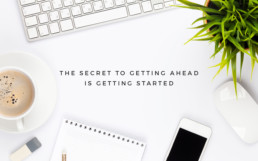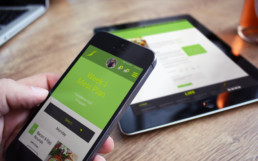My Top 10 resources When Starting Your New Business
Starting a new business can be daunting. There’s a million things to do, and all of a sudden you need to become marketer, administrator, accountant, designer, product manager as well as CEO!
At Label I often find myself working with amazing individuals in this position and the good news is, there are lots of resources out there to help you become the Jack of all these trades, and even the master of them, that you need to be. That is, until your business takes off and you can hire other people to do the things you’d rather not do, of course. Before you bust out the champagne at your launch drinks, these might come in handy…
1. Get some clarity on your ‘why’
This is a Ted Talk from Simon Sinek on Discovering Your Why. We start off most of our branding workshops with this inspirational talk to get into a great headspace for creating a brand and a business that really speaks to people.
2. Get inspired with some great free business mentoring
Marie is witty, entertaining and easy to watch and her insights into small businesses are really worth taking time out to hear. Her site has a heap of free video content, and if you’re hooked and want to shell out for some more structured coaching, her online course ‘The Copy Cure’ is also something I recommend.
3. Check out the Shopify Blog – it’s not just for Shopify Users.
From starting your site, to shipping, to marketing – the Shopify Blog has a huge amount of concise, relevant, searchable content sure to assist you with starting your online presence, even if you don’t use Shopify.
4. Get your visual inspiration on with Pinterest!
Finally, some ‘work’ you can do from the comfort of your lounge while watching netflix! When you are starting out you will likely want to look around at other companies branding, both your competitors and just for inspiration to help drill down on the kind of visual identity you want to convey. As well as being a great resource for searching and looking for inspiration, pinterest makes it easy to collect your inspiration in one place (and then you have a hnady reference for your graphic designer when you end up briefing them).
To get you started, have a look at Label’s ‘identity’ board by clicking on the image above. Follow us on Pinterest for regular inspiration straight to your own personalised feed.
5. Find your Domain Name.
When you are looking at a name for your shiny new business, as well as being registered as business names, also check to see whether the domain name is taken:
You can search in lots of places online, like Crazy Domains, here.
6. Boo, If The Domain Name You Wanted is Taken …
This business name generator from Shopify can be helpful if you find a name you like, but it is taken and you want to look at ‘similar’ options.
Shopify’s Business Name Generator (it’s really a domain name ideas generator, but patatoes potatoes)
7. For some research into who owns that domain name you wanted
If you find that the domain name you wanted is taken, but there is no live site on the address, you may want to look up who it is registered to – to see whether they are based in a similar geographic area to you or are likely to surface as a competitor at some stage. ‘Who is’ enables you to look up who is the registered owner of the domain in question.
8. It’s time to start a website!
Once you have a business name, know what you are doing and are starting to look at creating your online presence, you may want to look at some wordpress themes. From wordpress themes, to vector graphics, stock photography and stock music, the envato marketplace is a great one stop shop to get the resources you need without having to sign up for an ongoing subscription.
9. And make some money.
If you have to do any sort of estimating, Qwilr is a quick easy way to create a beautiful looking estimate. I also use Harvest, Evernote and Asana – but the key takeaway here is, no matter what the task, there is likely a cloud based free or subscription out there that can help you automoate it.
10. Google Analytics. Don’t leave it for your marketing team.
If you really want to understand how your website is functioning, I strongly advise getting a good understanding of google analytics from the get go. It’s not rocket science to get a grasp of the basics, and if you leave it to the marketing professionals, it might be a year until you start taking notice. You can sign up for a free account and read about the basics before you even have a website. Then from the very first day you launch you can start tracking your visitors and their behaviour.
But Don’t forget the boring bits.
Domain name, check, business name not taken, check – you are almost ready to register your business name – but make sure you get some professional legal and accounting advice first. You’ll need legal advice to help structure your contracts and business insurance to cover you for things that may go wrong along the way. You will need professional advice on legal and trading names, and the way you structure your business financially. Whether it be a company or a trust, and which state it is registered in will affect the way you pay tax and can have a big impact on your bottom line.
This is just the beginning of the amazing resources out there when starting your new business. If you have any of your own time saving resources you’d like to share, or good or bad experiences with any of the ones I mentioned above, we’d love to know – share in the comments below.
Until next time!
D
Get Your Idea Out There, Today.
We’ve come to a point where online entrepreneurship is easier than ever. People with great ideas can now realistically put those ideas into play without having to reverse mortgage the house or stump up with hundreds of thousands of dollars.
Obviously that doesn’t mean success is a given. “Making it” is as hard as ever. Given lowered barriers to entry, your incredible idea has definitely already been thought of, but as yet, probably hasn’t been executed well enough to become a “thing”. The adage that in business 1% is the idea and 99% is the execution holds true more than ever before.
In 2015, ideas are cheap. Execution is everything. Friendster becomes MySpace becomes Facebook in less than a decade. Almost the exact same idea; different execution.
So, how do you determine if your idea is a winner?
There’s so much great theory to help you bring your ideas to life and test them in the market. If you’re starting an online business and you don’t know about Lean Startup, Eric Ries (B2C businesses) or Steven Blank (B2B businesses) you need to stop everything and hit Google straight away. Before you do anything else get familiar with their work, and become intimate with the term “Product / Market Fit”. Everything you do as a startup from day 1 should be bringing you closer to determining if there’s a market for your product (service / idea) without wasting time, money or other resources.
The best way to test your ideas fast is to buy traffic
Even today, here at Label, we’re surprised by the number of fantastic ideas that cross our desks where incredibly talented entrepreneurs think that just putting their ideas online, even with an expensive website, will lead to a gold rush. In 2015, great ideas are a commodity. A great idea, backed by laser focussed execution is unstoppable. Poor execution fails a good idea every time.
A simple way to test whether you’re close to achieving product / market fit is to send people to your site and see if they behave as you expect them to. In an eCommerce business, this is easy: do people buy anything when they visit your site.
In 2015, the easiest and quickest way to get people to your site is to buy traffic on a pay for performance basis.
Pay for Performance
Slowly dying are the days of advertising where you pay for “reach”: a publisher or media company tells you how many people they reach, and you pay for an ad that apparently reaches each and every one of those people, regardless of whether they display a preference to find out more about your product or service.
Online, the advertising model that makes most sense for startups is one where you only pay for qualified traffic: people who have indicated some preference for your product or service by clicking on an ad about it.
This model of advertising gives the entrepreneur a great toolkit to send at least partly qualified traffic to their sites and only pay for people who arrive.
In a later post, we’ll be looking at how to measure success with Pay for Performance media in an eCommerce business.








